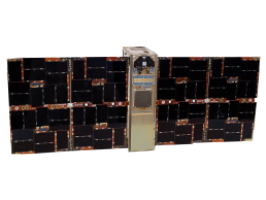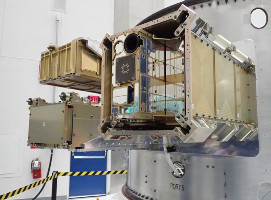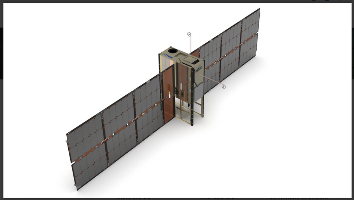| Spacecraft | Tyvak-0130 (GEOStare SV2, GEOStare-2) |
|---|---|
| Form factor | CubeSat |
| Units or mass | 12U |
| Status | Operational (Official press release) |
| Launched | 2021-05-15 |
| NORAD ID | 48606 |
| Deployer | Unknown |
| Launcher | Falcon 9 |
| Entity name | Tyvak |
| Institution | Company |
| Entity | Commercial |
| Nation | US |
| Manufacturer | AIVT by Terran Orbital |
| Operator | Terran Orbital |
| Partners | Lawrence Livermore National Laboratory (LLNL) |
| Oneliner |
Optical spectrum astronomy observation satellite with GEOstare 2 payload. |
| Description |
LLNL developed an advanced dual optical telescope system for the Tyvak-0130 spacecraft that is now supplying thousands of images taken in orbit. The Tyvak-0130 mission is to demonstrate advanced capabilities for space domain awareness (SDA), earth observation, and astronomy. SDA is a relatively new concept placing space in the same military consideration of air, sea or land on the earth. Tyvak-0130 features an extremely stable space position control system that includes three star-tracker cameras and four ultra-smooth reaction wheels. The satellite also boasts a high-performance flight computer all developed by Tyvak and an advanced optical telescope system called GEOStare2, which was developed in collaboration with the Lawrence Livermore National Laboratory (LLNL). The GEOStare2, is an evolution of LLNL’s GEOStare1 system which was successfully demonstrated on Tyvak-61C. GEOStare2 includes two co-boresighted imaging channels that feature LLNL’s monolithic optics telescope technology. Monolithic optics telescopes are reflective designs that are built upon a single ultra-high purity fused silica block. The compact nature of the monolithic telescope enables smaller imaging systems to function without compromising performance. These telescopes are extremely robust and provide clearer visual representations with no temperature interference, and present no need for an in-flight focus adjustment. The Medium field-of-view imager is optimized for high sensitivity for SDA and astronomy applications. This imager has a sensitive- backside-illuminated 2 Megapixel CMOS sensor. This imager features a platescale of 3.9 arcseconds per pixel and sensitivity to 14th magnitude stars (the dimmest object visible with the naked eye is typically magnitude 6.5) in a single 1-second photo. |
| Notes |
Size seems to be between 12U and 6U, but using the larger form factor by the use of volume in the deployer. |
| Sources | [1] [2] [3] |
| Photo sources | [1] [2] |
| COTS subsystems |
|
| Space photos |     
|
Last modified: 2023-06-09



